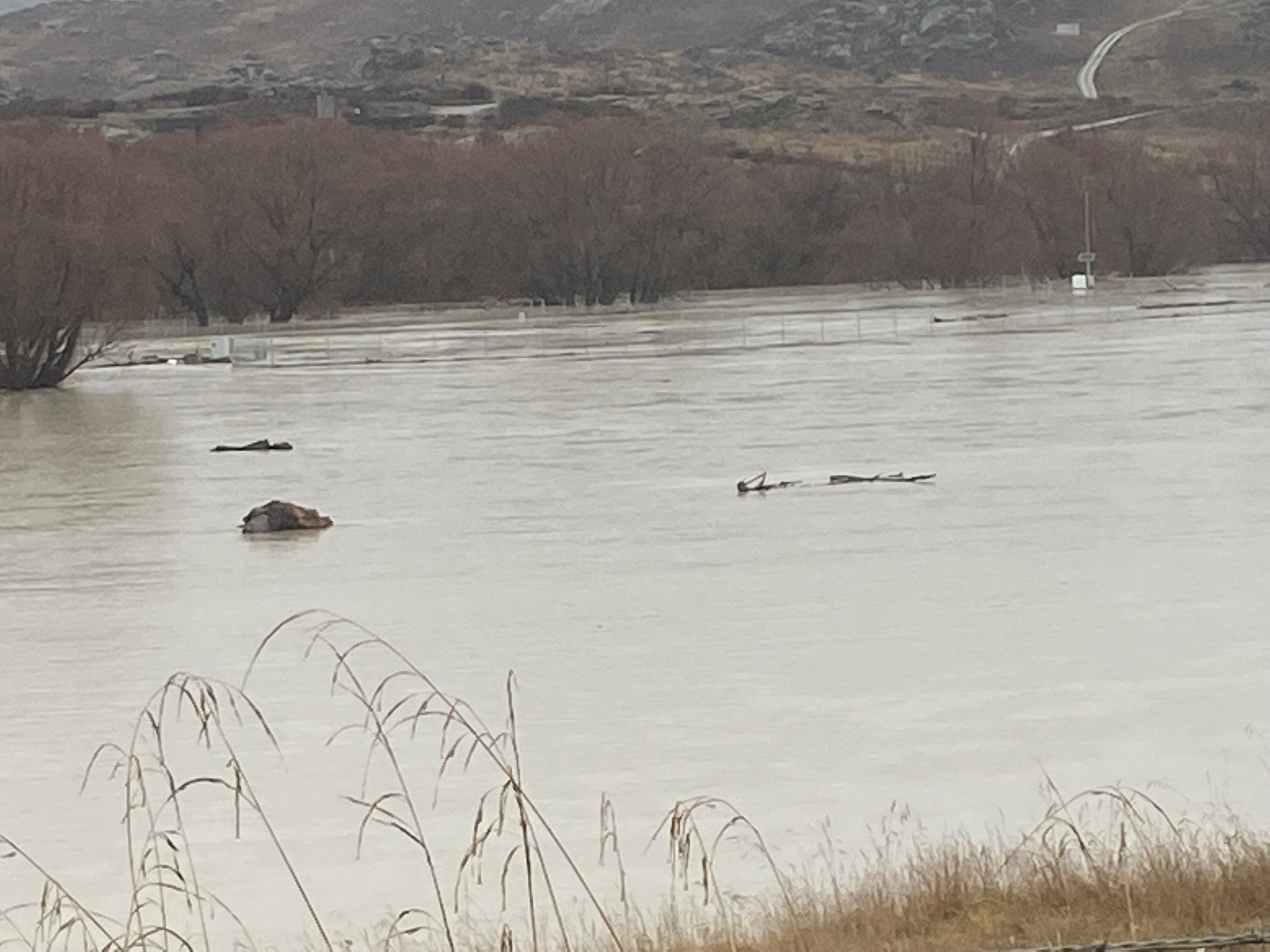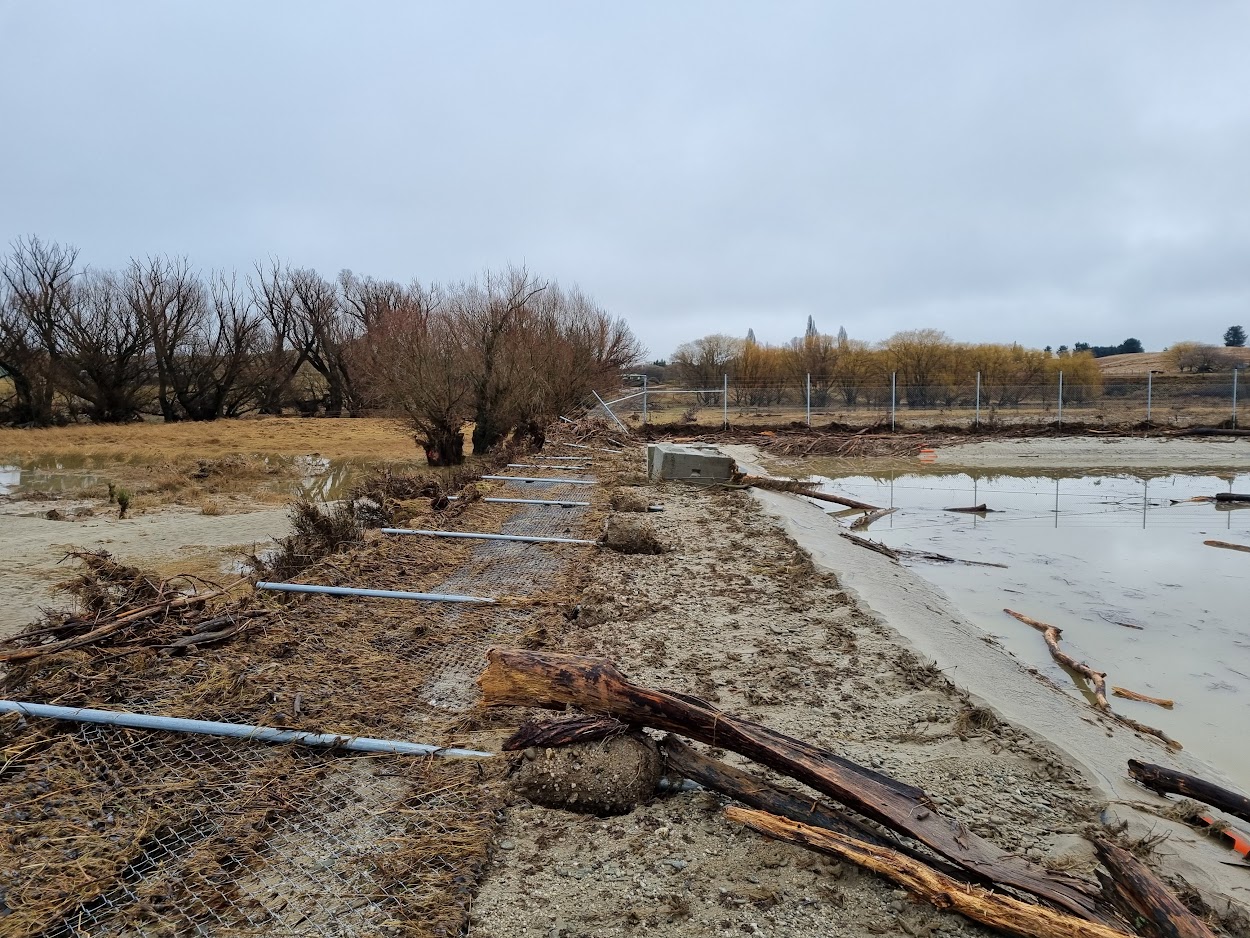Omakau wastewater treatment site hard hit by Tuesday’s rain event
News


Flooding has caused significant damage to the Omakau wastewater treatment site, with clean up to begin tomorrow (Friday 22 July).
On Tuesday (19 July) the site was flooded by the Manuherekia River for a period of approximately 24 hours during the heavy rain that hit the region.
The security fencing was pushed down by an accumulation of tree debris. One side of the pond embankments has been undermined and will require reinstatement to protect it from further damage. While still structurally intact, a large amount of tree debris, silt, gravel, and flood water has entered two treatment ponds
While treatment is still occurring, the flood has impacted on the performance of the ponds, which will result in a reduction in the quality of the discharge to the Manuherekia River.
The Otago Regional Council (ORC) has been advised and is monitoring the situation and the Central Otago District Council’s response.
The ORC advises that the highest previous flow recorded for the Manuherekia River at Ophir since 1971, was 602 cumecs in December 1995, and Tuesday’s event is likely to be around the third highest flow, below 600 cumecs.
The Central Otago District Council (CODC) is carrying out an assessment of the repairs to the treatment site with associated cost estimates, along with a review of options that can be implemented quickly to improve the level of treatment while the ponds are being cleaned.
Clean-up of the site will commence on Friday (22 July) and will likely take several weeks.
During this period, the CODC will also be monitoring the water quality upstream and downstream of the site, once the river level drops to enable this to be safely undertaken.
People are advised to stay out of the Manuherekia River between Omakau and the Clutha River until further notice. Any water that is taken downstream from Omakau for drinking should be boiled.
The first Omakau wastewater treatment pond was constructed in 1965, with a second pond added in 1976.
The CODC has been upgrading the site to improve the discharge quality over the past two years.
It was particularly distressing to see the damage that had occurred to the new pond liner, and the equipment that had recently been installed on the site, CODC Three Waters Director Julie Muir, said.
“This is the second time the site has flooded in five years. The first flood prompted a review of the long-term future of the site, given that increased frequency of flooding is expected in the future as a result of climate change.
“A business case is currently being prepared to consider alternative options for treatment of wastewater from both Omakau and Alexandra. This is considering options for treatment and for discharge to land instead of waterways.”
Included in the analysis is an option to combine the Omakau and Alexandra treatment onto one site, as well as options for continuing with two separate sites.
The Council has committed to identifying a preferred option, with associated cost estimates to be prepared by 2025 as a condition of its resource consents for Omakau, and by 2026 for Alexandra.
These changes at both Omakau and Alexandra are required to meet the impacts of aging infrastructure, increased rainfall from climate change, population growth in the area, and changes to societies’ views regarding wastewater treatment and discharges.

Pictures show flooding at Central Otago District Council’s wastewater treatment site and significant damage to the infrastructure.

